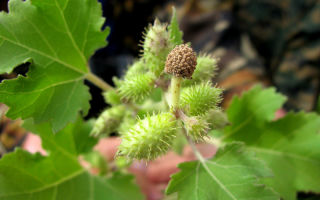Content
The medicinal properties of cocklebur are actively used by traditional medicine. The plant has a number of contraindications, but with proper use, it will not cause harm.
What a cocklebur looks like
The annual plant belongs to the Astrov family and is also found under the names burr, burr or thistle. The height of an annual is usually about 1 m, its stem is straight and fleecy, covered with carved triangular leaves. The latter can reach 10 cm in diameter.
At the end of July, inflorescences appear on the stems of the common cocklebur - slightly elongated spike-shaped heads. In September, they turn into prickly seed pods.
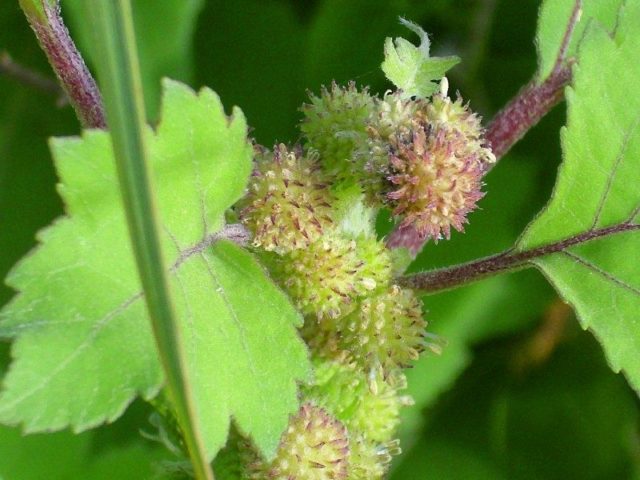
In the wild, the plant can be found almost all over the world, mainly in warm regions. The common thistle grows in Europe and North America, in the southern regions of Russia, in Central Asia, in Australia and Africa. Most often, the annual chooses wet and light sandy soils on the banks of reservoirs, it is also found on wastelands, garbage heaps, at fences and along roadsides.
The chemical composition of cocklebur
The healing properties of an annual plant are due to its rich composition. The following substances are present in the common cocklebur:
- iodine;
- vitamin C;
- flavonoids and antioxidants;
- essential oils;
- saponins and tannins;
- dyes;
- alkaloids;
- resins and fatty oils.
Traditional medicine uses not only leaves and stems to treat ailments, but also the roots of the common cocklebur, as well as its seeds. All parts of the plant have medicinal properties.
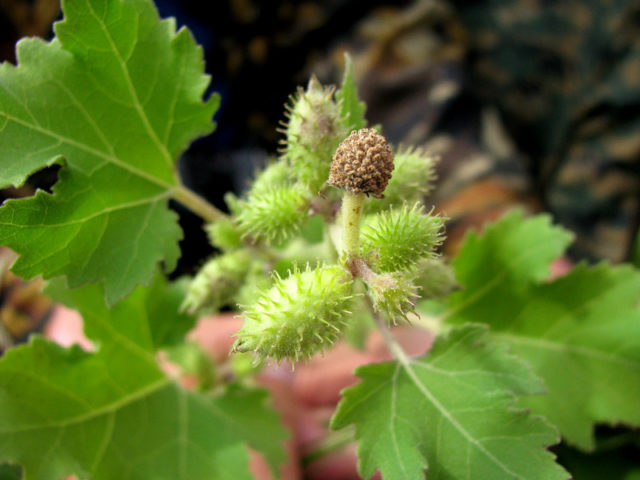
Useful properties of cocklebur
Weakly poisonous cocklebur is used to treat many acute and chronic diseases. In particular, the plant:
- has anti-inflammatory and antimicrobial effects;
- acts as a natural diuretic;
- improves blood composition and lowers temperature;
- has a sedative effect and has a positive effect on the nervous system;
- acts as a good pain reliever;
- has a hepatoprotective effect and protects the liver;
- stimulates good immune function;
- helps with joint diseases.
The medicinal herb is used to treat kidney and bladder inflammation. Dangerous thistle is used for diseases of the respiratory organs, for skin ailments and for gynecological inflammations.
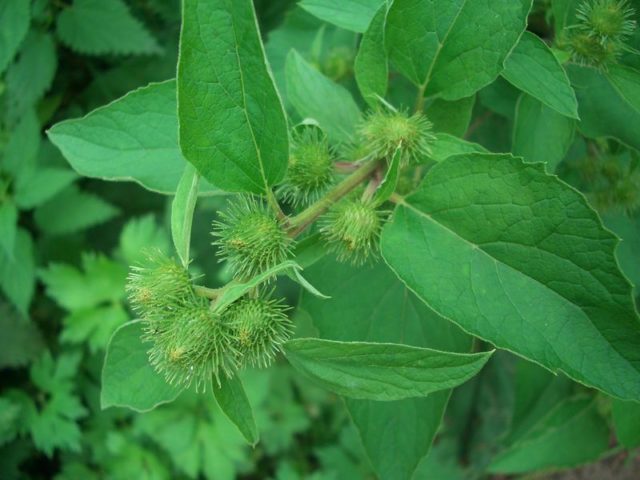
Cocklebur in oncology is valued for its antioxidant properties. It is a good cancer prevention, and with the permission of a doctor, it can be used in the treatment of tumors.
Cocklebur harm
The annual plant contains toxic substances glycosides, therefore, if used illiterately, the thistle can be harmful. It is mainly dangerous when fresh, and in the process of drying and heat treatment, toxic substances are destroyed:
- The average daily dosage of medicinal thistle is about 3 large spoons of decoction or infusion.
- In the case of using cocktail tincture on alcohol, the daily rate is reduced to 15-30 drops.
- In case of an overdose of the drug, digestive upsets, allergic reactions, nausea and headache may occur.
Before using medicinal thistle, you need to make sure that it does not cause individual intolerance. For the first time, the agent is consumed in the amount of a few drops, after that you need to wait 2 hours and check if a negative reaction appears. Before applying the plant externally, you need to apply a tincture or ointment to the bend of the arm and see if redness occurs.
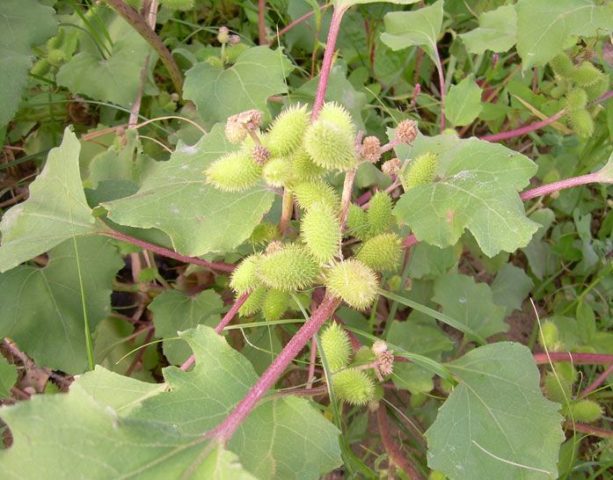
Contraindications to cocklebur
The common cocklebur has some contraindications. It is strongly not recommended to use herb:
- during pregnancy and during breastfeeding;
- in the presence of individual intolerance;
- with exacerbation of peptic ulcer and pancreatitis;
- with a tendency to constipation;
- with gastritis with high acidity in an acute state.
How to drink and brew cocklebur
Basically, folk medicine uses ordinary cocklebur in the form of medicinal decoctions and infusions. There are several proven recipes to get the most out of the plant without side effects.
Cocktail decoction
The most popular use of common cocklebur in folk medicine is a decoction based on dried leaves. They do it like this:
- a large spoonful of raw materials is poured with a glass of water;
- boil over low heat for 15 minutes;
- filter the broth and leave to infuse for an hour.
You need to drink the product three times a day, 1 large spoon. The broth is good for intestinal disorders, diarrhea, and inflammatory processes.
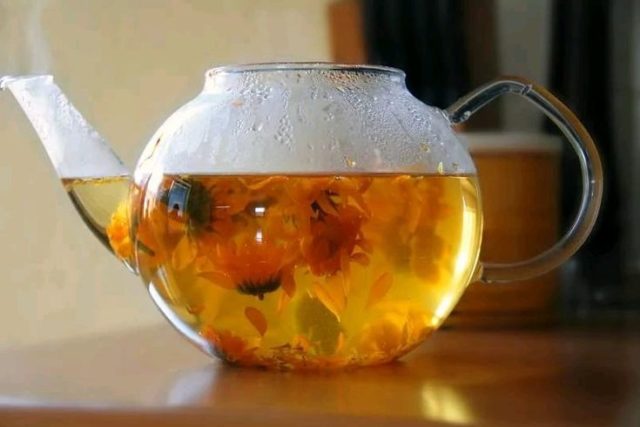
Cocklebur juice
Healing juice is used to treat diseases both externally and internally. Lightly dried fear thistle is ground in a blender, and then squeeze the gruel through cheesecloth.
Inside, for the treatment of ailments, juice is consumed only 15 drops twice a day, the agent can be diluted in 1 large spoonful of water. It is best to take the medicine on a full stomach soon after a meal. Thistle juice helps well with throat diseases and inflammatory processes in the oral cavity, it can also be treated with furunculosis.
Externally, the agent is used to treat skin diseases - lichen, urticaria, diathesis and scabies. Fresh juice can be used to lubricate insect bites, the common cocklebur relieves inflammation, itching and swelling well.
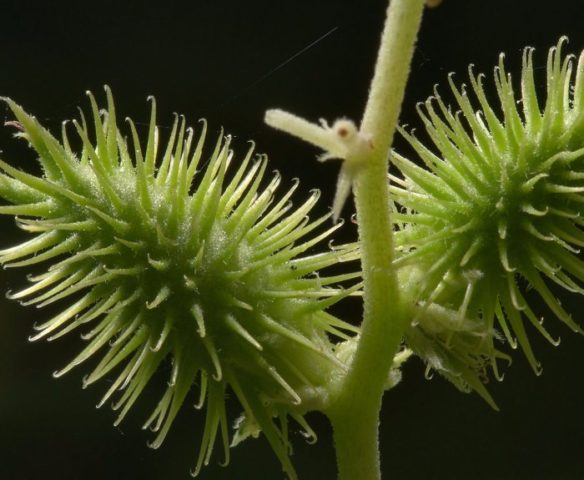
Tincture of common cocklebur
The medicinal properties of cocklebur in the thyroid gland and inflammatory processes of the genitourinary system are usually used in the form of a tincture. To prepare it, it is necessary to squeeze the juice from the dried stems and leaves, and then mix it with vodka in equal proportions.
Since the product contains alcohol, they use it in very small dosages, only 30 drops twice a day. The medicine is diluted in a small amount of pure water, and the total duration of treatment with cocklebur tincture should not exceed 10 days.
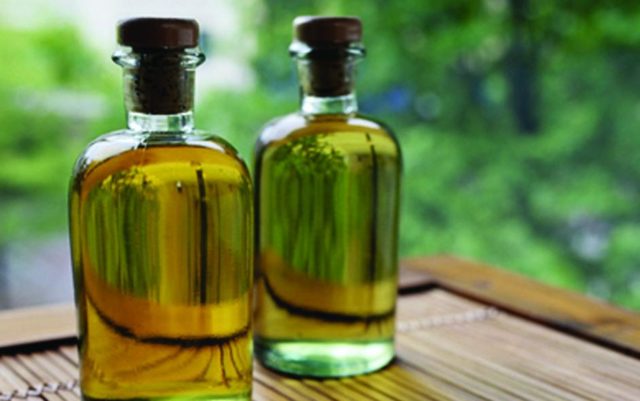
Infusion of common cocklebur
An aqueous infusion of dried thistle has strong medicinal properties. They do it like this:
- a small spoonful of dry raw materials is poured with a glass of hot water;
- leave under the lid for an hour;
- filter through cheesecloth.
They drink the infusion in several sips throughout the day. The remedy helps well with inflammatory diseases, digestive disorders, skin ailments.
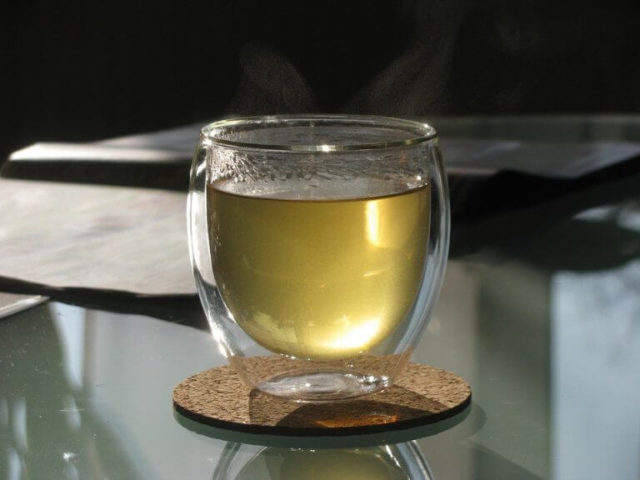
Cocklebur application
Decoctions, infusions and other remedies based on common cocklebur are used to treat a wide range of ailments. Danger thistle benefits:
- with kidney stones;
- with boils, eczema and dermatitis;
- with psoriasis;
- with diseases of the thyroid gland;
- with poor digestion and a tendency to diarrhea;
- with colds;
- for respiratory ailments - from a simple cough to tuberculosis.
It is recommended to use an ordinary cocklebur, including in the form of an ointment. It is very simple to prepare it, for this you need:
- chop 2 large spoons of leaves and fruits of the plant;
- pour raw materials with a glass of melted fat, for example, lard;
- for 10 minutes, boil the mixture over low heat, stirring continuously.
Then the product is removed from the stove and left to infuse for 2 hours, after which it is filtered through a gauze cloth. A thick ointment is applied to skin irritations and lesions twice a day - in the morning and before bedtime.
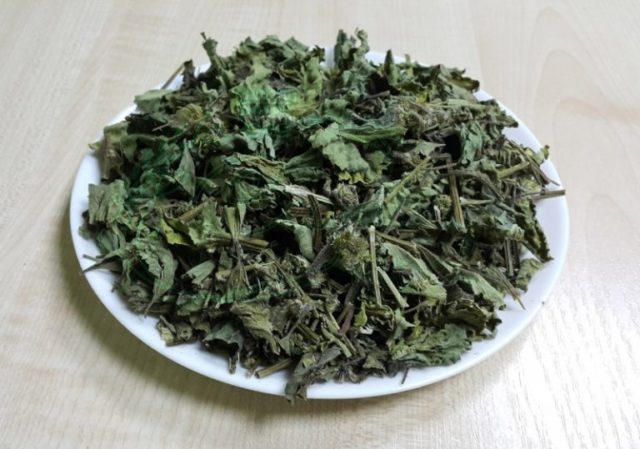
Collection and storage rules
For medicinal purposes, it is customary to use all parts of the common cocklebur - leaves, seeds, roots and stems. But they collect raw materials at different times, since nutrients accumulate in the tissues of the plant unevenly:
- Thistle leaves and stems are best harvested in late July or early August. During this period, the annual blooms, and its aerial parts contain the maximum amount of valuable substances.
- The seeds of the plant ripen in rounded capsules closer to autumn, and are usually harvested at the end of September.
- The roots gain a maximum of useful substances in mid-October - they need to be dug out several weeks before frost.
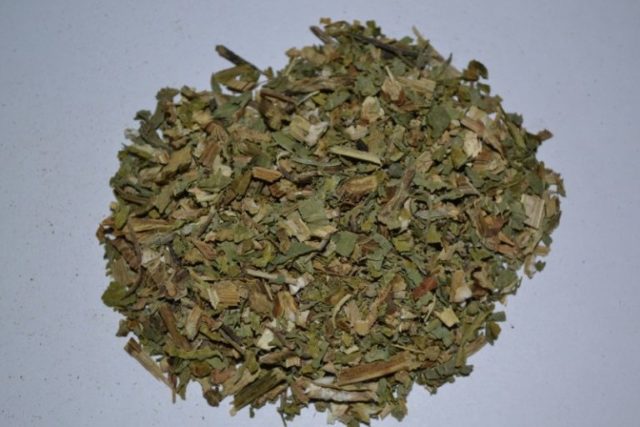
The harvested thistle is usually dried naturally. The raw materials are laid out in a thin layer in a warm room, away from sunlight, and wait for the complete evaporation of moisture, the dried parts should begin to crumble. After that, the common cocklebur is laid out in paper bags or wooden boxes and stored in a dry and dark place. The grass retains its beneficial properties for about 3 years, then you will need to collect the raw materials again.
Photo of cocklebur plant
The common dreadthist has rather characteristic features, and it is not difficult to recognize it among other annual grasses. But in order to confidently distinguish a medicinal plant, it is worth examining a photo of a cocklebur.
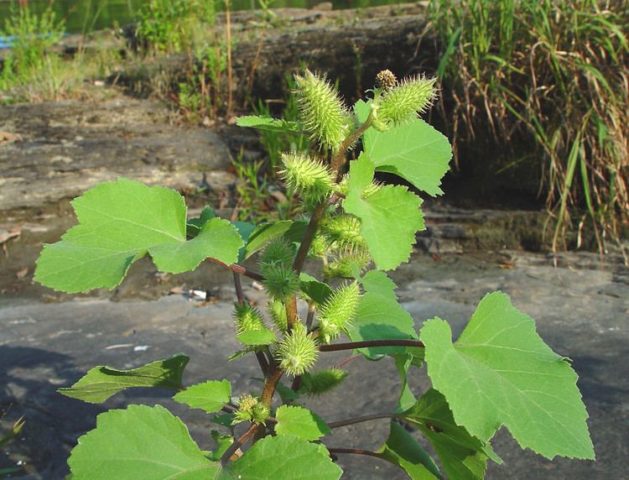
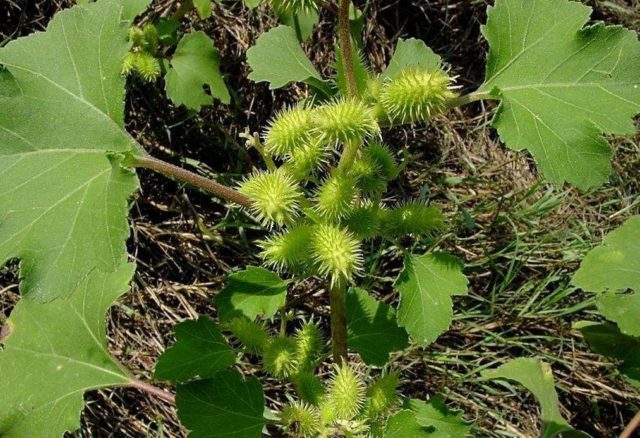
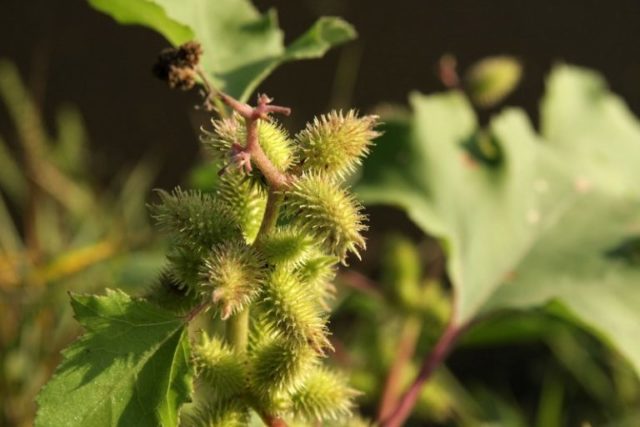
Conclusion
The medicinal properties of cocklebur are highly valued in the treatment of inflammatory diseases and ailments of the thyroid gland. Since the thistle is poisonous, it should be consumed according to proven recipes, but with care, it will not cause harm.

